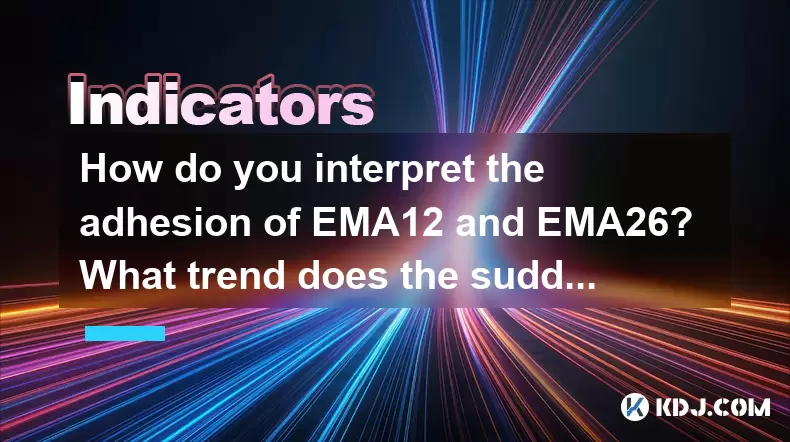-
 Bitcoin
Bitcoin $119900
0.91% -
 Ethereum
Ethereum $4576
8.55% -
 XRP
XRP $3.264
4.05% -
 Tether USDt
Tether USDt $0.9998
-0.05% -
 BNB
BNB $834.7
4.17% -
 Solana
Solana $191.8
9.96% -
 USDC
USDC $0.9998
-0.02% -
 Dogecoin
Dogecoin $0.2363
6.08% -
 TRON
TRON $0.3525
2.56% -
 Cardano
Cardano $0.8419
9.12% -
 Chainlink
Chainlink $23.19
9.97% -
 Hyperliquid
Hyperliquid $44.97
4.53% -
 Stellar
Stellar $0.4489
4.20% -
 Sui
Sui $3.876
6.19% -
 Bitcoin Cash
Bitcoin Cash $618.1
7.14% -
 Hedera
Hedera $0.2617
6.55% -
 Ethena USDe
Ethena USDe $1.000
-0.03% -
 Avalanche
Avalanche $24.61
7.96% -
 Litecoin
Litecoin $131.7
9.52% -
 Toncoin
Toncoin $3.502
3.62% -
 UNUS SED LEO
UNUS SED LEO $9.093
1.32% -
 Shiba Inu
Shiba Inu $0.00001358
5.37% -
 Uniswap
Uniswap $11.50
5.05% -
 Polkadot
Polkadot $4.150
7.77% -
 Dai
Dai $0.9997
-0.05% -
 Cronos
Cronos $0.1650
-0.75% -
 Ethena
Ethena $0.7981
2.06% -
 Pepe
Pepe $0.00001216
8.64% -
 Bitget Token
Bitget Token $4.467
1.74% -
 Aave
Aave $319.2
9.18%
How do you interpret the adhesion of EMA12 and EMA26? What trend does the sudden divergence indicate?
EMA12 and EMA26 adhesion in crypto trading signals market consolidation, while sudden divergence indicates trend changes; use with other indicators for best results.
Jun 09, 2025 at 04:07 am

Understanding EMA12 and EMA26 in Cryptocurrency Trading
In the world of cryptocurrency trading, Exponential Moving Averages (EMAs) play a crucial role in technical analysis. Specifically, EMA12 and EMA26 are commonly used to identify trends and potential reversal points in the market. These EMAs are calculated differently from simple moving averages, giving more weight to recent prices, which makes them more responsive to new information.
The Concept of Adhesion Between EMA12 and EMA26
Adhesion refers to the situation where EMA12 and EMA26 are moving closely together, often appearing to converge or stick to one another. This phenomenon can signal different things depending on the broader market context. When the two EMAs are adhering closely, it suggests a period of consolidation or sideways movement in the market. Traders often interpret this as a time when the market is in a state of equilibrium, with neither bulls nor bears having a clear advantage.
Interpreting Adhesion in Different Market Conditions
In a bullish market, the adhesion of EMA12 and EMA26 can indicate that the upward trend is taking a brief pause. Traders might view this as a potential opportunity to enter the market if they believe the bullish trend will resume. Conversely, in a bearish market, the adhesion might suggest that the downward trend is losing momentum, possibly hinting at an upcoming reversal or a period of stabilization.
Sudden Divergence: A Signal of Change
Sudden divergence between EMA12 and EMA26 is a critical event for traders to watch. This occurs when the two EMAs, which were previously adhering closely, start to move away from each other. The direction of the divergence can provide insights into the future movement of the market.
Bullish Divergence
A bullish divergence happens when EMA12 starts to move above EMA26 after a period of adhesion. This is often interpreted as a signal that the market is gaining bullish momentum. Traders might see this as an opportunity to enter long positions, anticipating further upward movement. The widening gap between the two EMAs can confirm the strength of the emerging bullish trend.
Bearish Divergence
On the other hand, a bearish divergence occurs when EMA12 begins to move below EMA26. This indicates that bearish forces are gaining strength, and the market might be poised for a downward move. Traders often take this as a signal to exit long positions or enter short positions, expecting the bearish trend to continue.
Using EMA12 and EMA26 in Conjunction with Other Indicators
While the adhesion and divergence of EMA12 and EMA26 provide valuable insights, they are most effective when used in conjunction with other technical indicators. For instance, Relative Strength Index (RSI), Moving Average Convergence Divergence (MACD), and Bollinger Bands can help traders confirm the signals provided by the EMAs.
For example, if EMA12 and EMA26 show a bullish divergence, and the RSI is also moving out of the oversold territory, this confluence of signals can increase the confidence in a bullish trend. Similarly, if the MACD confirms the bearish divergence indicated by the EMAs, it can provide a stronger case for a bearish market move.
Practical Application in Cryptocurrency Trading
To effectively use EMA12 and EMA26 in cryptocurrency trading, traders need to follow a systematic approach. Here are some steps to consider:
- Identify the Current Market Trend: Before looking at the EMAs, understand the broader market trend using tools like trend lines or other moving averages.
- Observe EMA12 and EMA26: Plot these two EMAs on your chart and observe their behavior over time. Look for periods of adhesion and sudden divergences.
- Confirm with Other Indicators: Use additional indicators to confirm the signals provided by the EMAs. This can help reduce false positives and increase the reliability of your trading decisions.
- Set Entry and Exit Points: Based on the signals from the EMAs and other indicators, set clear entry and exit points for your trades. This can include stop-loss orders to manage risk effectively.
- Monitor and Adjust: Continuously monitor the market and adjust your strategy as needed. The cryptocurrency market can be volatile, and staying flexible is key to successful trading.
The Role of Timeframes in EMA Analysis
The effectiveness of EMA12 and EMA26 can vary depending on the timeframe being analyzed. On shorter timeframes, these EMAs can generate more signals, but they may also be more prone to false positives. On longer timeframes, the signals might be fewer but more reliable. Traders need to choose the appropriate timeframe based on their trading style and risk tolerance.
Conclusion and FAQs
Understanding the adhesion and divergence of EMA12 and EMA26 can provide valuable insights into market trends and potential trading opportunities in the cryptocurrency market. By combining these insights with other technical indicators and a systematic trading approach, traders can enhance their decision-making process.
Frequently Asked Questions
Can EMA12 and EMA26 be used for all cryptocurrencies?
Yes, EMA12 and EMA26 can be applied to any cryptocurrency, but their effectiveness may vary depending on the liquidity and volatility of the specific asset. More liquid assets tend to provide clearer signals.How often should I check the EMA12 and EMA26 for trading decisions?
The frequency of checking depends on your trading style. Day traders might monitor these EMAs multiple times a day, while swing traders might check them less frequently, perhaps once or twice a day.What is the best timeframe to use EMA12 and EMA26 for cryptocurrency trading?
There is no one-size-fits-all answer, as it depends on your trading goals. Shorter timeframes like 15-minute or 1-hour charts are suitable for day trading, while 4-hour or daily charts might be better for swing trading.Are there any risks associated with relying solely on EMA12 and EMA26 for trading?
Yes, relying solely on these EMAs can be risky due to potential false signals. It's crucial to use them in conjunction with other indicators and to have a robust risk management strategy in place.
Disclaimer:info@kdj.com
The information provided is not trading advice. kdj.com does not assume any responsibility for any investments made based on the information provided in this article. Cryptocurrencies are highly volatile and it is highly recommended that you invest with caution after thorough research!
If you believe that the content used on this website infringes your copyright, please contact us immediately (info@kdj.com) and we will delete it promptly.
- Unich's OTC Exchange: Surging with $1.2B Volume – What's the Hype?
- 2025-08-13 02:50:11
- MoonBull's Explosive Moves: Your Crypto Whitelist Ticket to Ride!
- 2025-08-13 02:30:11
- MAGACOIN Finance: Don't Miss the Presale Bonus!
- 2025-08-13 02:30:11
- Trump's Crypto Kingdom: $2.4 Billion and Counting
- 2025-08-13 02:50:11
- Solana, LSTs, and SEC Approval: A New Dawn for Crypto?
- 2025-08-13 02:55:12
- Bitcoin's Profit Surge: Unpacking the BTC Value Boom
- 2025-08-13 02:55:12
Related knowledge

What does it mean when the +DI and -DI cross frequently in the DMI indicator but the ADX is flattening?
Aug 11,2025 at 03:15am
Understanding the DMI Indicator ComponentsThe Directional Movement Index (DMI) is a technical analysis tool composed of three lines: the +DI (Positive...

What does it mean when the moving average, MACD, and RSI all send buy signals simultaneously?
Aug 11,2025 at 01:42pm
Understanding the Convergence of Technical IndicatorsWhen the moving average, MACD, and RSI all generate buy signals at the same time, traders interpr...

What does it mean when the price is trading above the SAR indicator but the red dots are densely packed?
Aug 09,2025 at 11:49pm
Understanding the SAR Indicator and Its Visual SignalsThe SAR (Parabolic Stop and Reverse) indicator is a technical analysis tool used primarily to de...

What does it mean when the candlestick chart forms a "Morning Star" but trading volume is sluggish?
Aug 12,2025 at 06:28pm
Understanding the Morning Star Candlestick PatternThe Morning Star is a three-candle bullish reversal pattern commonly observed in cryptocurrency pric...

What does it mean when the RSI indicator moves sideways for an extended period between 40 and 60?
Aug 10,2025 at 08:08am
Understanding the RSI Indicator in Cryptocurrency TradingThe Relative Strength Index (RSI) is a momentum oscillator widely used in cryptocurrency trad...

What does it mean when the MACD histogram continues to shorten but the price reaches a new high?
Aug 09,2025 at 09:29pm
Understanding the MACD Histogram and Its ComponentsThe MACD (Moving Average Convergence Divergence) indicator is a widely used technical analysis tool...

What does it mean when the +DI and -DI cross frequently in the DMI indicator but the ADX is flattening?
Aug 11,2025 at 03:15am
Understanding the DMI Indicator ComponentsThe Directional Movement Index (DMI) is a technical analysis tool composed of three lines: the +DI (Positive...

What does it mean when the moving average, MACD, and RSI all send buy signals simultaneously?
Aug 11,2025 at 01:42pm
Understanding the Convergence of Technical IndicatorsWhen the moving average, MACD, and RSI all generate buy signals at the same time, traders interpr...

What does it mean when the price is trading above the SAR indicator but the red dots are densely packed?
Aug 09,2025 at 11:49pm
Understanding the SAR Indicator and Its Visual SignalsThe SAR (Parabolic Stop and Reverse) indicator is a technical analysis tool used primarily to de...

What does it mean when the candlestick chart forms a "Morning Star" but trading volume is sluggish?
Aug 12,2025 at 06:28pm
Understanding the Morning Star Candlestick PatternThe Morning Star is a three-candle bullish reversal pattern commonly observed in cryptocurrency pric...

What does it mean when the RSI indicator moves sideways for an extended period between 40 and 60?
Aug 10,2025 at 08:08am
Understanding the RSI Indicator in Cryptocurrency TradingThe Relative Strength Index (RSI) is a momentum oscillator widely used in cryptocurrency trad...

What does it mean when the MACD histogram continues to shorten but the price reaches a new high?
Aug 09,2025 at 09:29pm
Understanding the MACD Histogram and Its ComponentsThe MACD (Moving Average Convergence Divergence) indicator is a widely used technical analysis tool...
See all articles

























































































